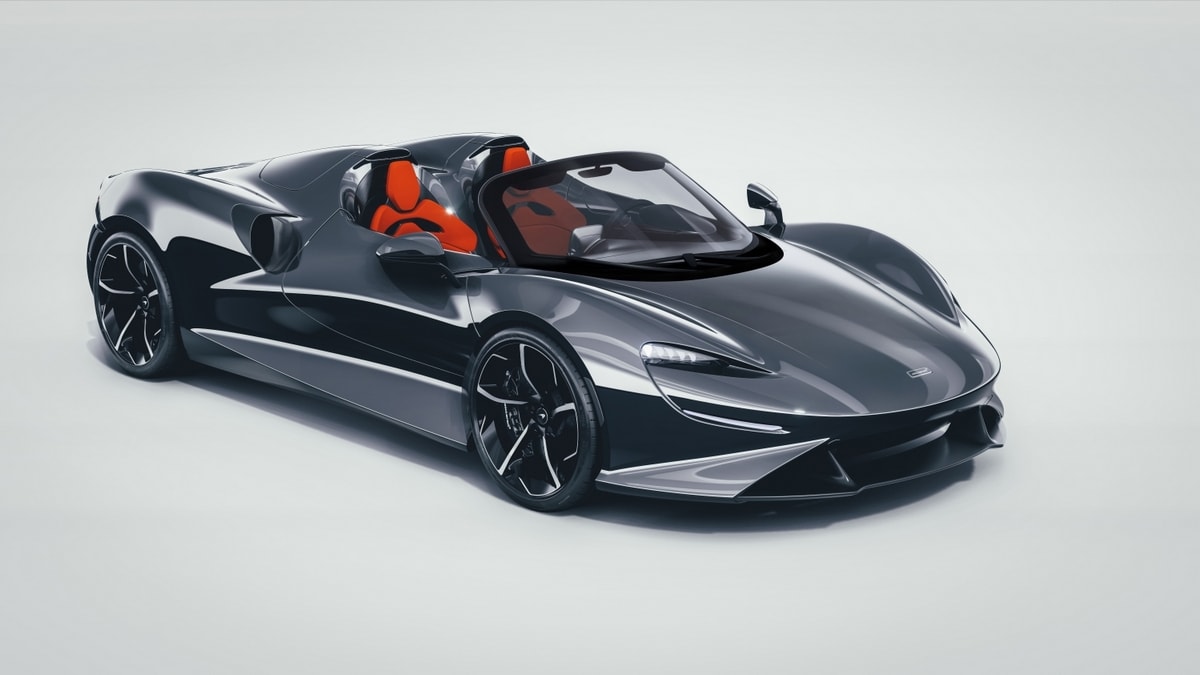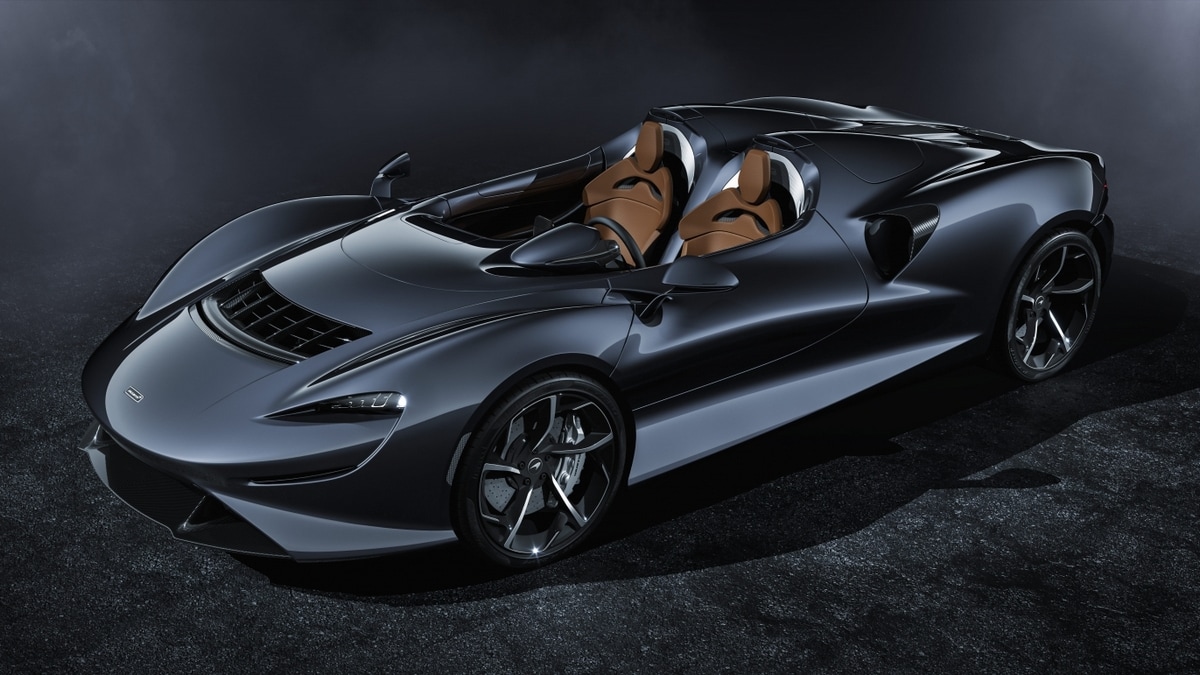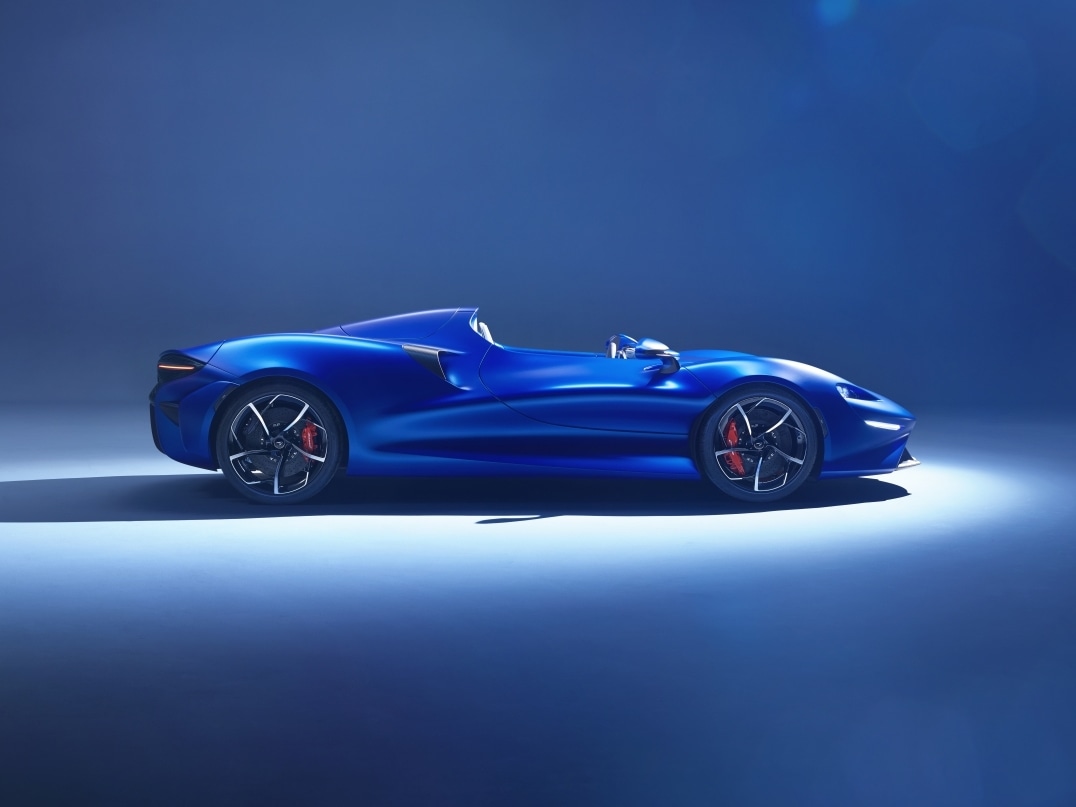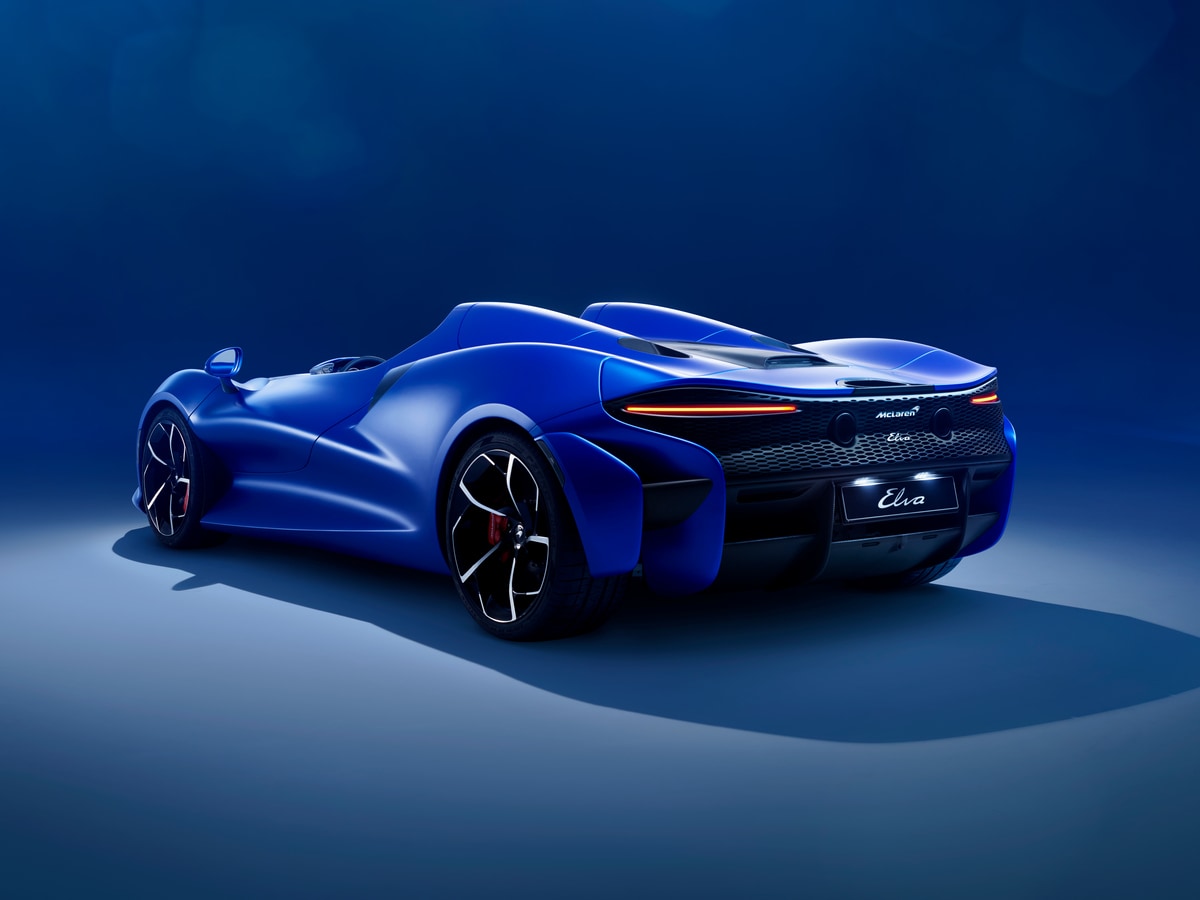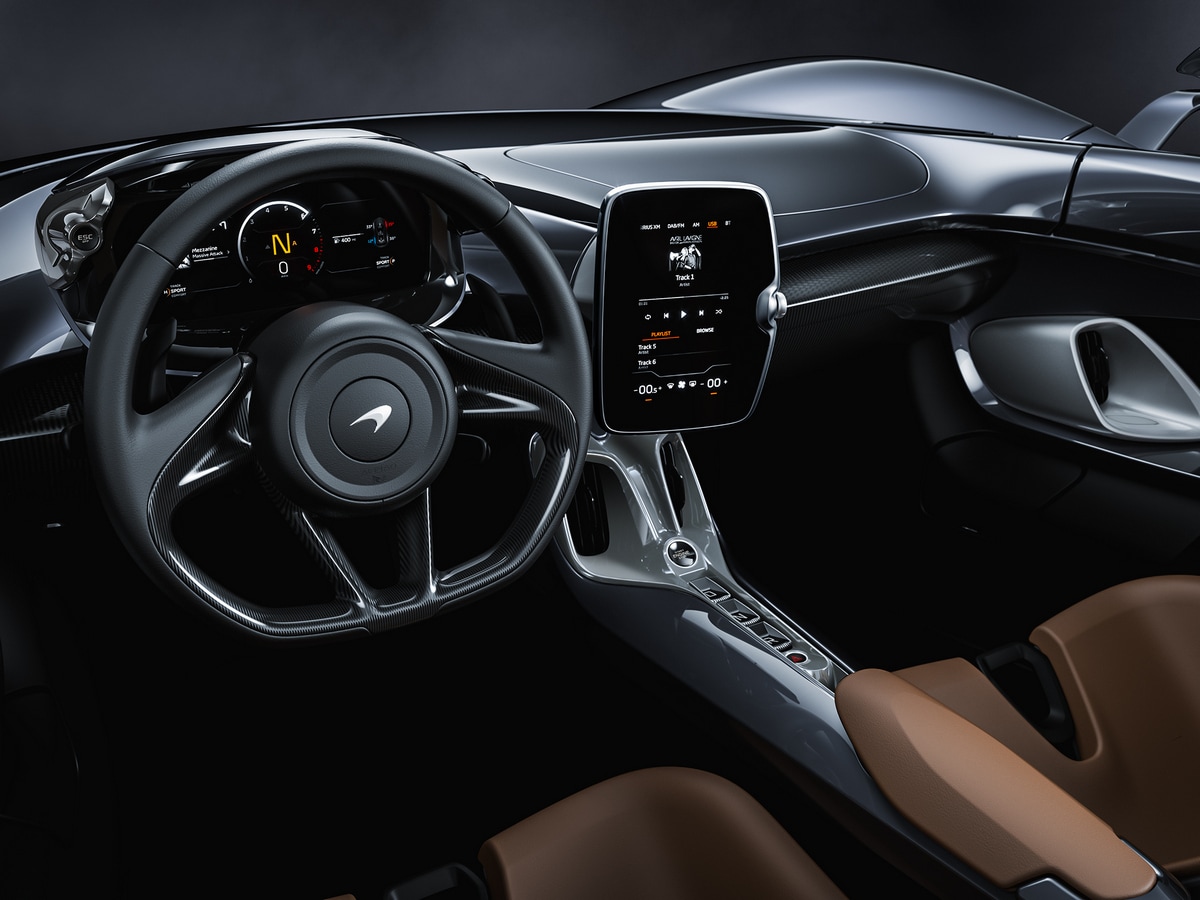- New Ultimate Series roadster
- Carbon-fiber chassis and body
- The lightest road car ever offered by McLaren
- Introducing McLaren Air Management System (AAMS)
- Pricing starts at $1,690,000
The 2021 McLaren Elva is an all-new, open-cockpit, two-seat sports car promising unusual styling, breathtaking performance, and exclusivity. The lightweight supercar, which fits into the company’s “Ultimate Series”, is engineered to deliver high levels of driver engagement and involvement.
Unique open-cockpit bodywork
The roofless body pays tribute to Bruce McLaren’s 1960s-era sportscar called the McLaren-Elva. The nose is low, with sculpted character lines immediately recognized as part of the McLaren family. Dihedral-opening doors are thick and taller than expected. The doors lack any noticeable air intakes, but are actually hollow and engineered with tunnels that channel air through them. Twin flying buttresses, which hide a roll-over protection system, are the signature feature of the rear. A pair of high-mounted titanium exhaust pipes bring up the tail. An active rear spoiler is mounted high at the aft end of the chassis. It has an active rear spoiler with an airbrake function (when engaged, it lifts nearly vertically to increase downforce and drag).
Two passengers sit in the cockpit in a traditional configuration, but there is no roof, no side windows, and no front windshield. McLaren admits that helmets may be preferred while riding in the Elva, though it does offer a windshield option for those who want a more traditional driving experience. The passenger compartment has an instrument cluster that moves with the adjustable steering wheel. Technical information is displayed on the standard 8-inch high-resolution monitor mounted centrally in the cockpit.
Active Air Management System to reduce buffeting
Despite no windscreen, buffeting within the passenger cabin is minimized by what McLaren calls the Active Air Management System (AAMS). Air is channeled through the nose of the vehicle and directed out (at high velocity) through the trailing edge of the hood just in front of the occupants. This creates a “relative bubble of calm,” says McLaren. The AAMS system uses a motorized deflector, which raises and lowers vertically, to modify the air pressure in the front of the vehicle. This further improves airflow to increase passenger comfort.
McLaren says the AAMS system is not needed in urban settings, so the deflector is retracted. As vehicle speeds increase, the deflector will deploy (a cabin-mounted button allows the driver to deactivate the system).
Twin-turbocharged V8 with 804 horsepower
A mid-mounted 4.0-liter, twin-turbocharged, V8 engine is rated at 804 horsepower and 590 pound-feet of torque. The V8 comes from the same engine family powering the flagship McLaren Senna and Senna GTR race car. It features a flat-plane crankshaft, lightweight connecting rods, and dry-sump lubrication. Using a standard 7-speed dual-clutch gearbox, the Elva promises blinding performance. With launch control, the British automaker claims the 2-seater will rocket to 60 mph in less than three seconds with the vehicle blasting through 124 mph in just 6.7 seconds. It’s is quicker than the company’s Senna sports car.
Heat-resistant ceramic brakes are standard. They are made of high-performance sintered carbon to deliver better thermal conductivity and strength compared to traditional carbon brakes. The use of the premium material means the rotors may be smaller in diameter, and lighter, without compromising performance. In an effort to further reduce mass, the brake caliper pistons are made of titanium, saving about three pounds.
How much does the McLaren Elva cost?
The 2021 McLaren Elva has a base price of $1,690,000. McLaren Special Operations (MSO) offers options including a wide range of color choices for the upholstery and exterior, and personalized 18-carat white gold or platinum badges. McLaren is the only automaker offering Thin-ply Technology Carbon (TPT), a stratified and shimmering exterior finish that resembles flowing water. Customer deliveries of the Elva take place late this year.
